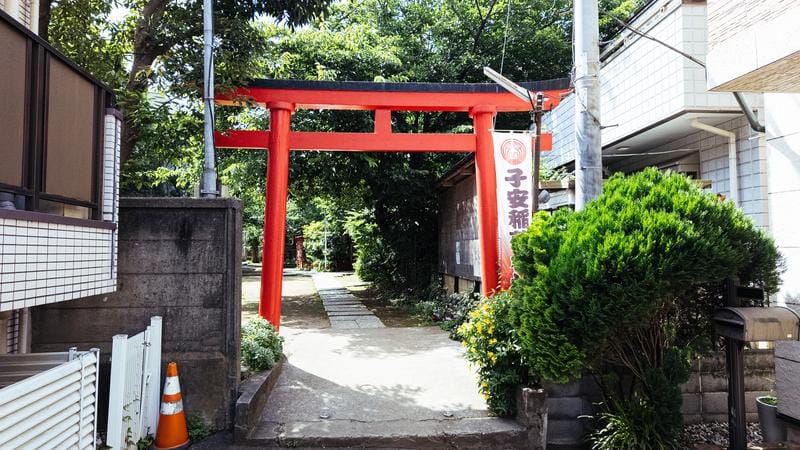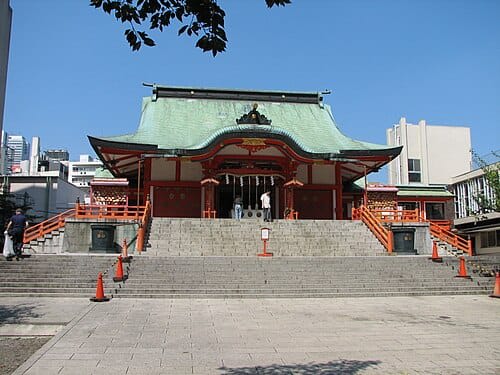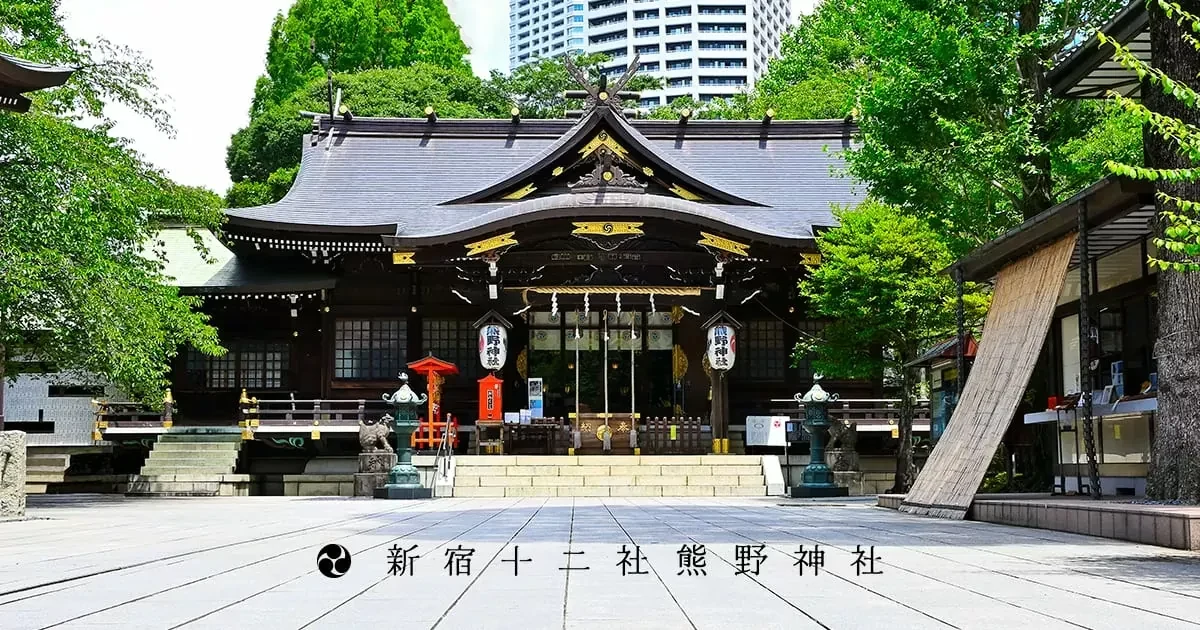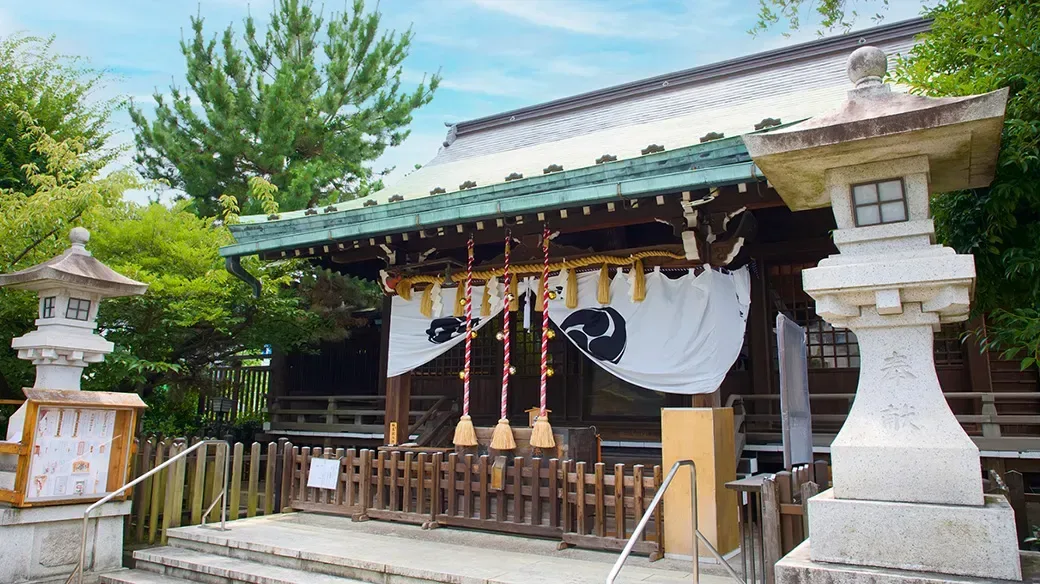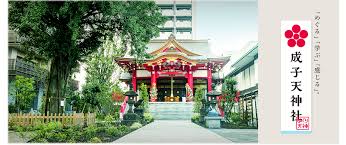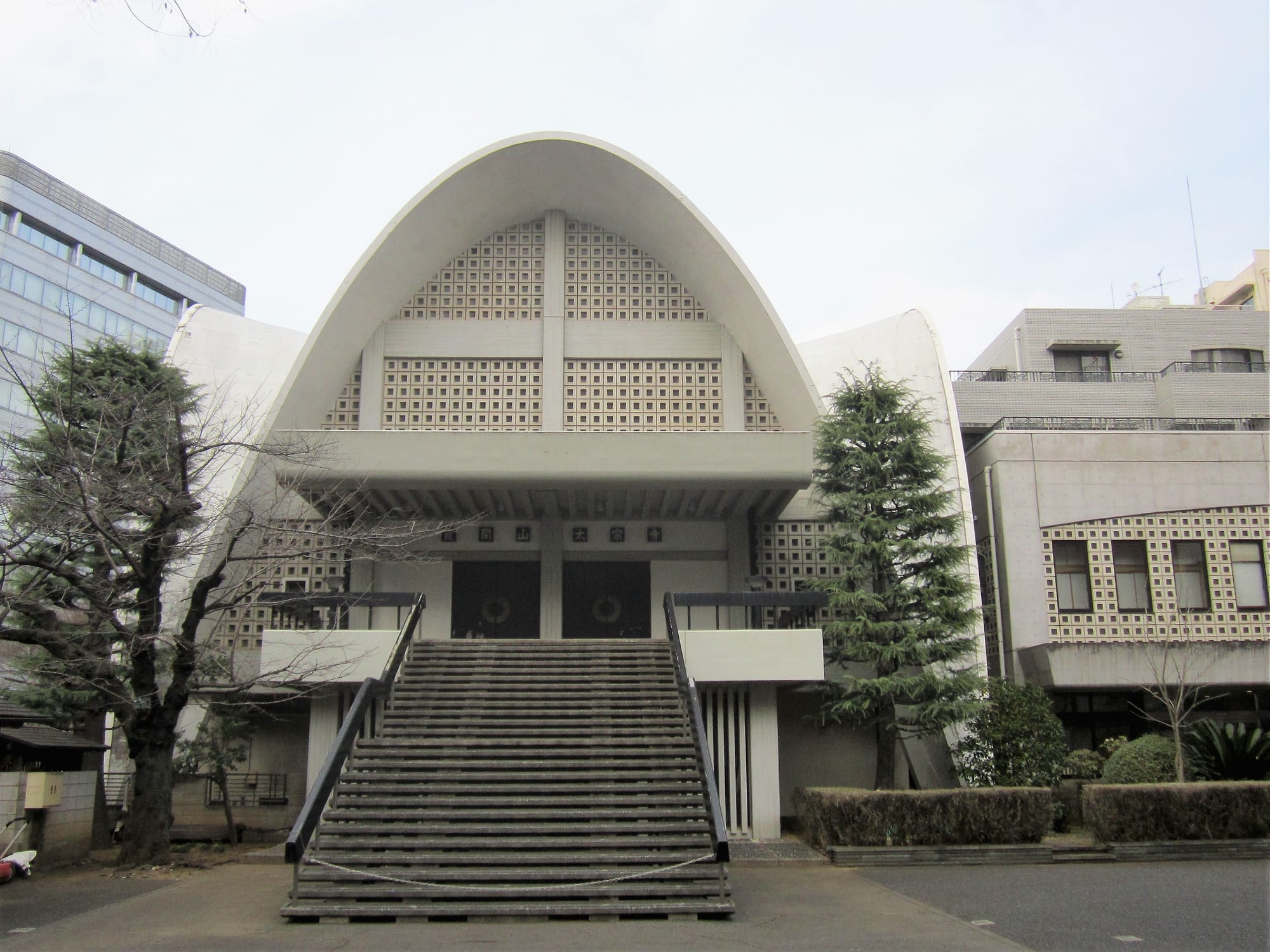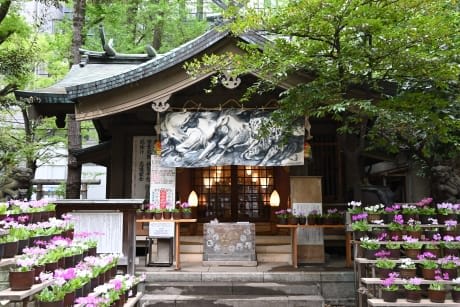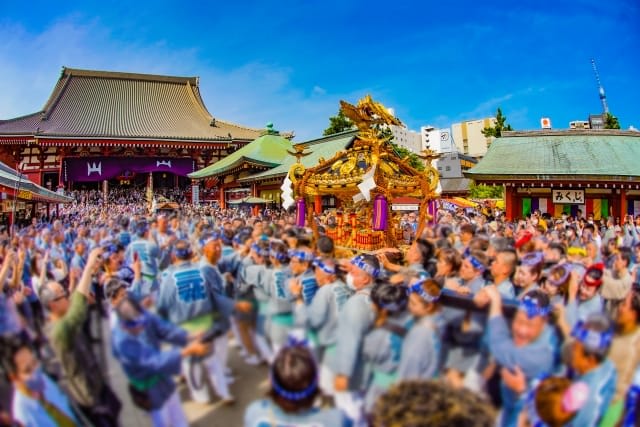Shinjuku’s Must-See Temples and Shrines: A Guide to Hanazono, Kumano, and Hidden Gems
Since moving to a neighborhood adjacent to Shinjuku in 2024, I've been visiting Shinjuku almost daily to explore its appeal and discover spots I can recommend to tourists. I updated this article in January 2026 to incorporate my findings from this research, along with the latest information for 2026.
Another reason for updating the article is the growing interest in tours that allow visitors to safely and deeply experience Shinjuku's nightlife. As these tours gain popularity, Magical Trip's tour, which ranked #1 among all tours on Tripadvisor, has been receiving numerous applications.

If you want to enjoy Shinjuku's nightlife, I recommend the "Tokyo Bar Hopping Night Tour in Shinjuku," which ranked #1 on Tripadvisor. Our guides who know Shinjuku inside and out will take you bar hopping while avoiding dangerous areas, allowing you to fully enjoy Shinjuku at night.
If you're interested in exploring Shinjuku's cityscape and retro atmosphere, join the "Tokyo by Night Photography Tour." A professional photographer who also serves as a local guide intimately familiar with Shinjuku will show you the most photogenic spots in Shinjuku and Shibuya.

I hope you can safely and thoroughly enjoy Shinjuku's nightlife with Magical Trip's tours!
Introduction
Shinjuku stands as one of Japan's largest entertainment districts. Home to the world's busiest station, it buzzes with endless activity throughout the day and night.
While Shinjuku is famous for its vibrant entertainment district Kabukicho, it offers much more - from the bustling office district in the west to natural havens like Shinjuku Gyoen. Among the modern skyscrapers and neon lights, you'll discover numerous traditional temples and shrines nestled in the heart of this dynamic area, hosting historical festivals and events throughout the year.
This guide will introduce you to both famous temples and shrines around Shinjuku and hidden spiritual gems that many tourists might miss. We've compiled essential highlights and recommended photo spots to help you fully appreciate each sacred site.
Why Visit Shinjuku's Temples and Shrines?
Despite its reputation as Tokyo's ultimate metropolitan center, Shinjuku surprisingly houses numerous serene temples and shrines. As you walk through the district, you'll encounter these traditional sanctuaries unexpectedly emerging between towering skyscrapers and bright neon signs.
This unique contrast stems from Shinjuku's history. Before developing into the major urban center it is today during the first half of the 20th century, it was a modest town known for its inns and marketplaces. Many of the temples and shrines we'll introduce, including the Hanazono Shrine, have stood here since those earlier times, preserved amidst the urban development.
This coexistence of modern technology, culture, and tradition epitomizes Tokyo's character, and nowhere is this more evident than in Shinjuku. Experience the depth of Tokyo's cultural heritage by visiting these spiritual sites.
Top 5 Must-Visit Temples and Shrines in Shinjuku
Hanazono Shrine
Source: Wikipedia
Located near Kabukicho and Golden Gai in Shinjuku's east side, Hanazono Shrine has stood at its current location since the 16th century. It serves as Shinjuku's guardian shrine and is beloved by many.
Among its many attractions, the small Itoku Inari Shrine (威徳稲荷神社) within the main shrine grounds has recently gained popularity. Known for its deity of love and relationships, it attracts many visitors seeking blessings for romantic success and fertility.
Near the Itoku Inari Shrine, you'll find a mesmerizing path of consecutive red torii gates, creating an otherworldly atmosphere perfect for photography. This spot offers mystical photo opportunities that capture the spiritual essence of the shrine.
As a symbol of Shinjuku located in its very center, Hanazono Shrine should be your first stop when visiting Shinjuku's east side.
Address: 5-17-3 Shinjuku, Shinjuku-ku, Tokyo
Hours: 24 hours
Closed: Irregular
Phone: 03-3209-5265
Official Website: http://www.hanazono-jinja.or.jp/
Kumano Shrine
Source: Official website
Kumano Shrine is a sacred temple located next to Shinjuku Central Park near Shinjuku West Exit. Founded in the 15th century, this shrine boasts 600 years of history. It enshrines the deities of "Kumano," a famous religious site in Shinto tradition around Wakayama Prefecture.
The most remarkable aspect of Kumano Shrine is its serene and sacred atmosphere, which feels wonderfully out of place so close to Shinjuku Station. While it sits right next to Shinjuku Central Park where people relax on the grass, the shrine's grounds offer a strikingly peaceful contrast to the park's casual atmosphere.
From the shrine grounds, visitors can view the iconic Tokyo Metropolitan Government Building and Shinjuku's impressive cluster of skyscrapers. Take a moment to appreciate the fascinating contrast between the tranquil shrine and the bustling metropolis surrounding it.
According to local belief, praying at Kumano Shrine can bring wealth and business success. The shrine sells special lucky charms said to improve financial fortune, which might interest visitors looking to enhance their prosperity.
Address: 2-11-2 Nishi-Shinjuku, Shinjuku-ku, Tokyo
Hours: 24 hours
Closed: Irregular
Phone: 0333435521
Official website: http://12so-kumanojinja.or.jp/
Hikawa Shrine
Source: Official website
Officially known as "Shinjuku Shimoochiai Hikawa Shrine," this temple is a 7-minute walk from Shimoochiai Station. According to shrine records, it has an incredible history spanning over 2,400 years, making it one of the most venerable shrines in the area that has been worshipped since ancient times.
The shrine's main attraction is the "Sakura Mairi" event held from February to March. Early-blooming Kawazu cherry trees are planted around the shrine grounds and near the main hall, reaching full bloom in February. The sight of deep pink petals dancing around the shrine buildings creates a mystical atmosphere. Beautiful plum blossoms also bloom during the same season.
The shrine is famous as a photo spot for Kawazu cherry blossoms. Despite its central location, it's relatively uncrowded, allowing for peaceful photography sessions. Visitors can capture stunning images of Japanese beauty, such as cherry and plum blossoms flourishing above the shrine buildings.
Occasionally, the shrine hosts collaboration events with popular anime series, during which visitors can receive special commemorative stamps. It's a must-visit destination for those seeking a peaceful moment in a beautiful urban shrine setting.
Address: 2-7-12 Shimoochiai, Shinjuku-ku, Tokyo
Hours: 9:00 AM - 6:00 PM
Closed: Irregular
Phone: 0339513646
Official website: http://www.shinjyuku-hikawa.jp/
Ana Hachimangu Shrine
Source: Official website
Ana Hachimangu is a shrine located near Waseda Station in Shinjuku. With a history spanning 1,000 years, it has been particularly revered by many notable samurai throughout history.
A special highlight of Ana Hachimangu is its winter lucky charm distribution. In the traditional Japanese calendar, the winter solstice falls around December 20th, marking the shortest day of the year. From this day until February 3rd, the shrine offers a special charm called "Ichiyou-rakufuku."
This charm is believed to enhance financial fortune. On the winter solstice day, long queues form as people wait to receive these popular charms, though they're more easily obtained on other days during the distribution period.
In Japan, collecting unique charms from various shrines remains a popular tradition. Consider getting this lucky charm as a memorable souvenir from your visit to Shinjuku.
Address: 2-1-11 Nishi-Waseda, Shinjuku-ku, Tokyo
Hours: 9:00 AM - 5:00 PM
Closed: Irregular
Phone: 0332037212
Official website: https://www.anahachimanguu.jp/
Meiji Shrine
Source: Official website
Meiji Shrine is Tokyo's most visited shrine and one of the city's most famous religious landmarks. While it's closest to Yoyogi, Sendagaya, and Harajuku stations, you can also enjoy a pleasant 15-minute walk from Shinjuku Station. Established in 1920, this beloved shrine has become a central landmark in Tokyo's heart.
What makes Meiji Shrine particularly special is its lush natural environment right in the middle of Tokyo. The vast grounds are home to more than 100,000 trees. Many are evergreens like oak and camphor trees, which maintain their foliage year-round, offering visitors a refreshing green sanctuary in every season.
The shrine's most recommended photo spot is within the "Gyoen" (Imperial Garden) on the southern grounds. This paid admission garden features beautiful ponds and historic wells. Every view resembles a beautiful painting, making it perfect for photography enthusiasts who want to take their time capturing the perfect shot.
Meiji Shrine Outer Gardens: Best Season for Ginkgo Tree Avenue!

The shrine is particularly famous for its stunning ginkgo tree avenue. The row of ginkgo trees extends approximately 300 meters from Aoyama Street to the Outer Gardens' central plaza.
With 146 ginkgo trees lining the path, the best viewing time is from mid-November to early December when the leaves turn a magnificent golden color. Walking through the avenue during this season feels like passing through a golden tunnel.
This breathtaking autumn scenery is one of Tokyo's most popular fall foliage spots. As a long-time Tokyo resident, it's one of my favorite places too.
In early December, the falling ginkgo leaves create an especially magical atmosphere. It's another excellent photo opportunity, so be sure to bring your camera.
Address: 1-1 Yoyogi Kamizono-cho, Shibuya-ku, Tokyo
Opening Hours: (Gate opens) August 5:00-18:00, December 6:40-16:00 (varies slightly by month)
Closed: Irregular
Phone: 03-3379-5511
Official Website: https://www.meijijingu.or.jp/
Hidden Gems of Shinjuku! 3 Majestic Temples and Shrines
Naruko Tenjin Shrine
Source: Official website
Naruko Tenjin Shrine (Naruko-tenjinja) is located near Nishi-Shinjuku Station, surrounded by high-rise apartments. This shrine, dedicated to the deity of learning, boasts over 1,000 years of history. It features a striking red torii gate and an elaborate shrine building.
A notable attraction is the "Fujizuka," a miniature mountain. This was built for those who couldn't make the journey to the actual Mount Fuji. In Japanese culture, Mount Fuji isn't just a mountain – it's considered a sacred place of worship.
The mini-mountain takes about 5 minutes to climb. Though it looks simple, the path is surprisingly challenging. Reaching the top gives you a sense of achievement and a taste of mountain climbing. Photos from the summit capture a unique urban shrine setting with skyscrapers in the background.
The shrine grounds feature 200-year-old "komainu" (sacred guardian dog statues) and stone lanterns. There are also stone statues of the Seven Lucky Gods, believed to bring good fortune. With so many points of interest, be sure to explore every corner of this hidden gem.
Address: 8-14-10 Nishi-Shinjuku, Shinjuku-ku, Tokyo
Opening Hours: 9:00-16:00
Closed: Irregular
Phone: 03-3368-6933
Official Website: http://www.naruko-t.org/
Taisoji Temple
Source: Wikipedia
Taisoji Temple is a traditional Buddhist temple located near Shinjuku Gyoen. With over 400 years of history, this temple has long been revered by local residents in this area.
The main attraction is the statue of Enma in the Enma Hall. In Buddhism, Enma is considered the king of the underworld who judges the sins of the deceased. While Taisoji's Enma statue has a frightening face, it represents his benevolent intention to scold people to prevent them from committing sins. This statue has been affectionately known as "Shinjuku's Enma" by locals for several hundred years.
When you press the button in front of the statue, it becomes illuminated. The sight of the statue emerging from darkness is quite impressive – it startled me too! Though slightly scary, feel free to take photos if you're interested.
The temple also features a famous copper Buddha statue known as Jizo. This bodhisattva Jizo has been designated as an important cultural property by the Tokyo Metropolitan Government.
This is a highly recommended spot for visitors who want to experience a temple deeply rooted in Shinjuku's local community.
Address: 2-9-2 Shinjuku, Shinjuku-ku, Tokyo
Hours: 9:00 AM - 5:00 PM
Closed: Irregular
Phone: 03-3356-7731
Official Website: http://www.kanko-shinjuku.jp/spot/c004/article_374.html
Inari Kiou Shrine
Source: Shinjuku City Official
Inari Kiou Shrine is located just a 3-minute walk from Higashi-Shinjuku Station. Though small, this shrine has been worshipped by locals for 350 years. It is believed that praying here can cure illnesses.
The shrine's main highlight is the annual "Chinka Festival" held in April. During this time, over 100 pots of primroses (Sakurasou) grown at the shrine are displayed. The sight of these delicate flowers amid the urban landscape of high-rise buildings creates a soothing atmosphere that heals the soul.
While taking photos of the primroses is wonderful, there's another recommended spot at Inari Kiou Shrine.
It's the water basin with a demon (oni) face. This is a rare feature among Japanese shrines and is quite impressive. You're sure to get some interesting photos when you point your camera at it.
Though small, this shrine has unique characteristics. It's a must-visit spot for those interested in distinctive shrines with personality.
Address: 2-17-5 Kabukicho, Shinjuku-ku, Tokyo
Hours: 9:00 AM - 5:00 PM
Closed: Irregular
Phone: 03-3200-2904
Official Website: http://www.kanko-shinjuku.jp/spot/c004/article_392.html
If You're Interested in Tokyo's Temples and Shrines, Try Historical Walks in Yanaka and Asakusa!
While we've been introducing shrines near Shinjuku Station and in Shinjuku Ward, Tokyo has many more must-visit temples and shrines worth exploring.
Here, we'll introduce tours where you can explore temples and shrines in Yanaka, a retro downtown area easily accessible from Shinjuku via the Yamanote Line, and Asakusa, a famous tourist destination. If you're interested in Tokyo's temples and shrines, please consider joining these tours.
Yanaka Historical Walking Tour in Tokyo's Old Town

This walking tour explores Yanaka, an area known for its retro streetscapes and traditional downtown atmosphere. The tour highlights include visiting Nezu Shrine, a stroll through nostalgic shopping streets, and enjoying snacks at a local café.
The tour's main attraction is the extensive exploration of Nezu Shrine, one of Tokyo's most famous shrines with nearly 2,000 years of history. Within its grounds, you'll find the "Senbon Torii" (Thousand Torii Gates), a spectacular pathway lined with countless vermillion torii gates.
Similar to the famous Fushimi Inari Shrine in Kyoto, this mystical spot is extremely popular among visitors. It's a perfect photo opportunity you won't want to miss.
Nezu Shrine is also famous as a flower viewing spot, featuring beautiful seasonal blooms including azaleas. During the latter half of the tour, you'll visit a café for a light lunch and experience traditional doll painting.
This recommended tour combines beautiful shrine visits with exploring a historically rich neighborhood. Located just 30 minutes by train from Shinjuku, it's definitely worth considering for your itinerary.
- Meeting point: Outside Exit 1, Nezu Station (Tokyo Metro), 1-1 Nezu, Bunkyo-ku, Tokyo
- Tour area: Yanaka district
- Start time: 13:30
Asakusa Cultural Walk & Matcha Making Tour

This walking tour includes exploring Senso-ji Temple in Asakusa, along with matcha tea experience and lunch.
The highlight is the in-depth guided tour of Senso-ji Temple, Tokyo's most famous Buddhist temple. While the "Kaminarimon" (Thunder Gate) with its massive red gate and giant lantern is well-known, there are many other notable features including the ceiling dragon painting, enormous Buddhist statues, and small shrines within the complex.
On this tour, your guide will provide detailed explanations about these spots. Take advantage of their local knowledge to gain deeper insights into this famous temple.
The latter half of the tour includes a traditional matcha tea-making experience at a tea house and lunch featuring monjayaki, a beloved local specialty.
This tour is perfect for those particularly interested in Senso-ji Temple or anyone wanting to experience Asakusa's cultural attractions.
- Meeting point: In front of the Police Box at Kaminarimon, Senso-ji Temple (1-3-1 Asakusa, Taito-ku, Tokyo)
- Tour area: Asakusa area
- Start time: 11:00
